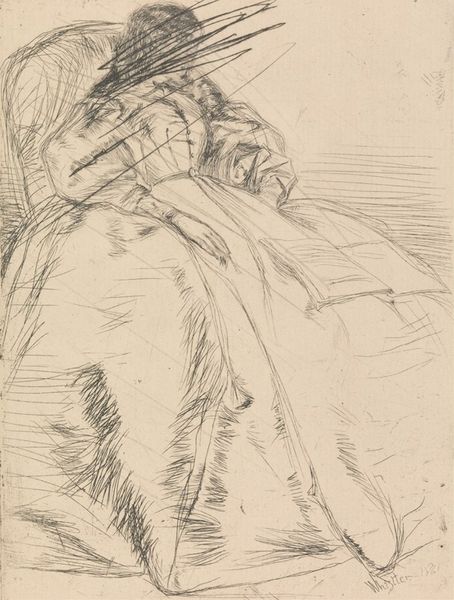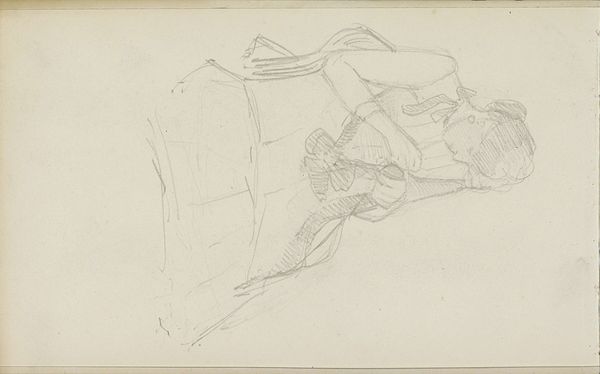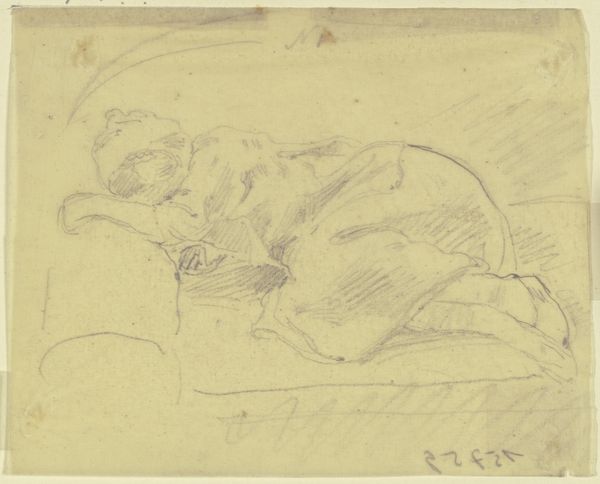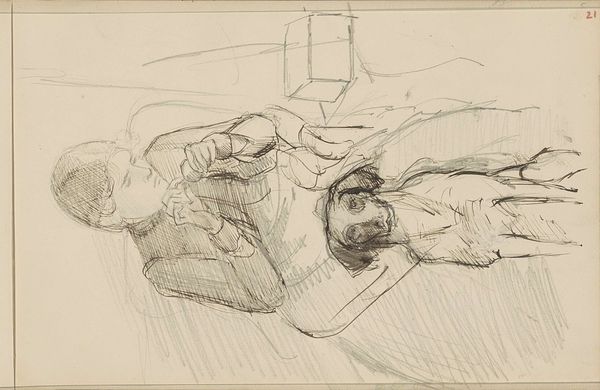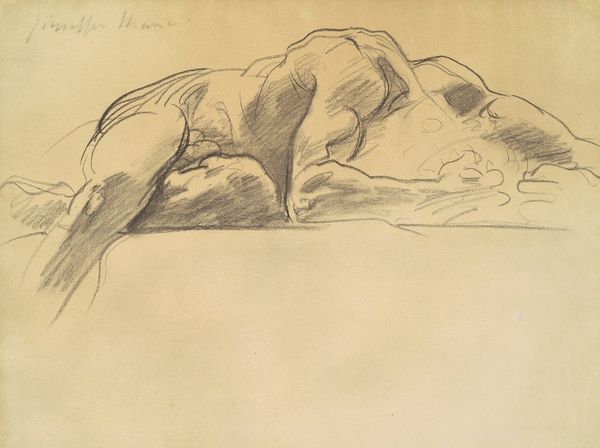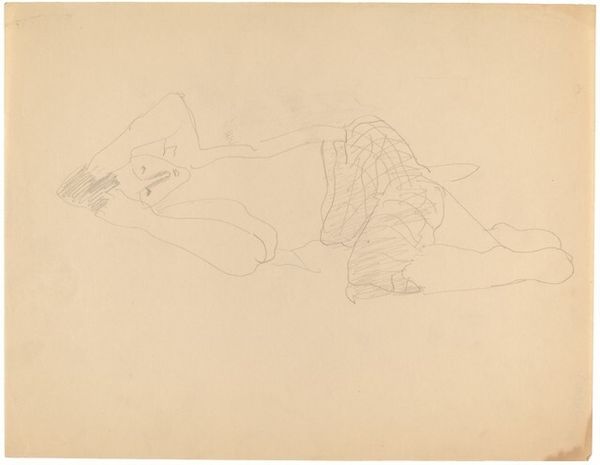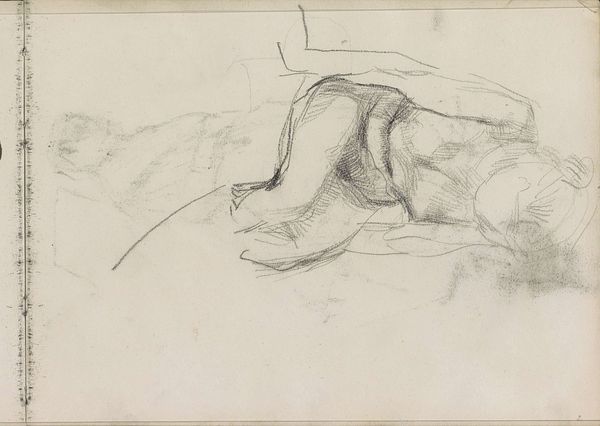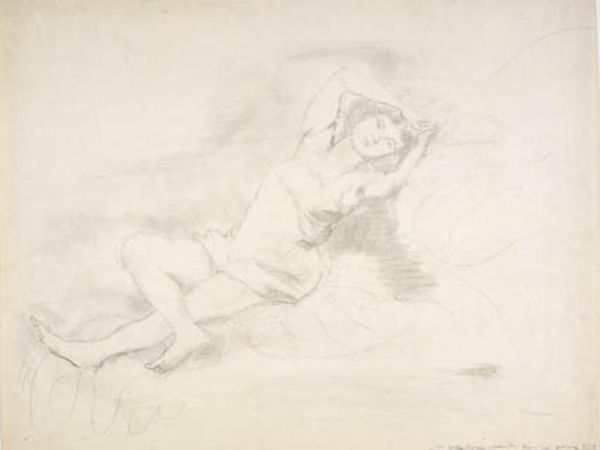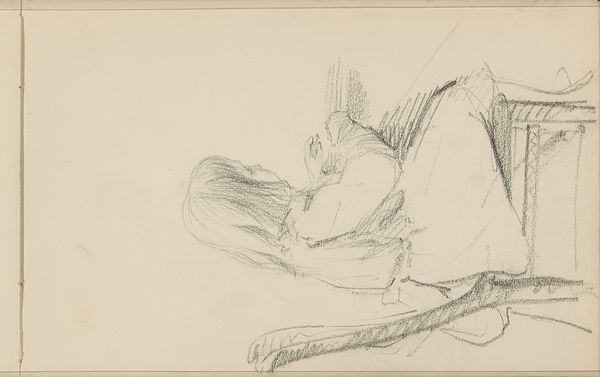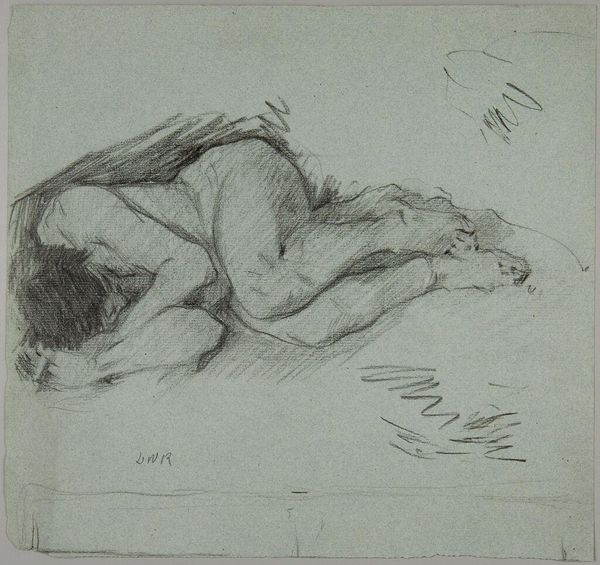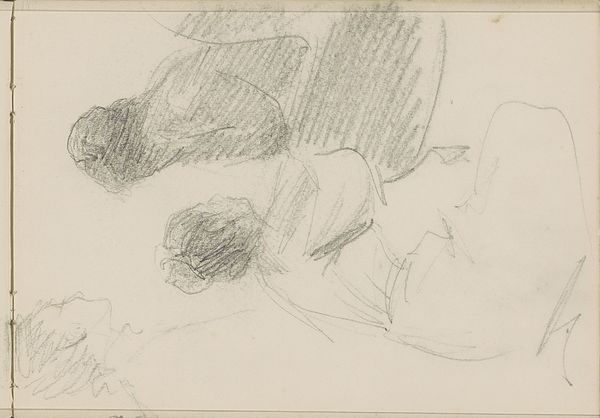
Copyright: Public Domain: Artvee
Editor: This is "A man asleep on a pile of luggage," a pencil drawing from 1858 by James McNeill Whistler. It’s so simple, almost just a collection of lines, yet it conveys such a sense of weariness. What do you see in this piece, beyond just a sleeping man? Curator: I see a powerful representation of transience and perhaps even displacement. The luggage becomes more than just baggage; it's a symbol of burdens, journeys, and the search for a temporary respite. Consider how sleep, in art and myth, often represents a liminal space—a transition between worlds. The man, suspended in slumber atop his belongings, evokes a sense of vulnerability, of being caught between places. Editor: That's interesting, I hadn't thought about the vulnerability aspect. How does the medium, the pencil drawing, contribute to this interpretation? Curator: The pencil marks, light and tentative, reinforce the temporary nature of the scene. Think about how sketching often precedes a more permanent, finalized work. Here, the sketch *is* the work. It captures a fleeting moment, hinting at the impermanence of rest, the inevitable awakening and continuation of the journey. Doesn't it also speak to the burdens that come with travelling? Editor: It really does. It makes me think about all the connotations baggage has– both emotional and physical! Curator: Precisely! Whistler uses the readily accessible image of someone resting amidst luggage to point toward other universal and symbolic ways of travelling– that through dreams and difficult times. Editor: That definitely changed how I look at the drawing! Thanks for pointing that out. Curator: It was my pleasure, observing and deconstructing visual language can deepen anyone's viewing experience.
Comments
No comments
Be the first to comment and join the conversation on the ultimate creative platform.

